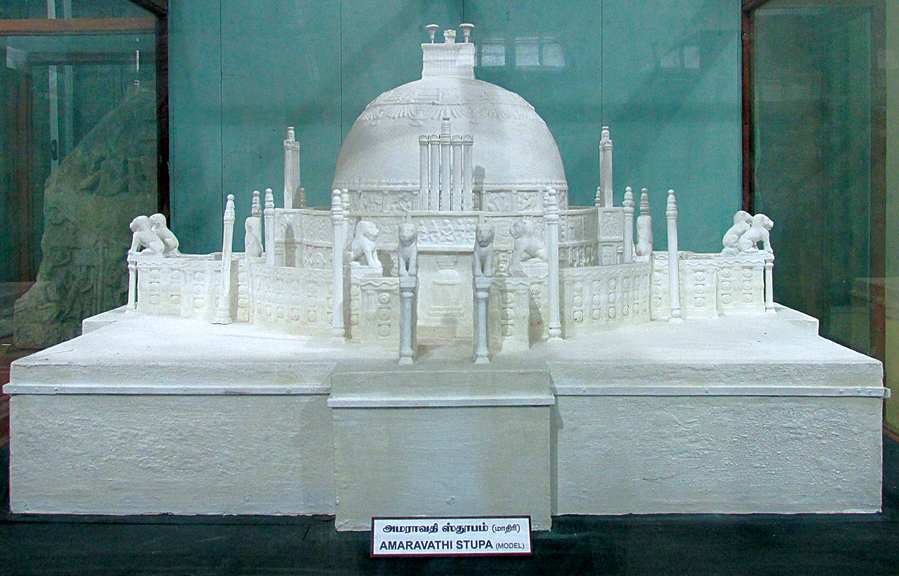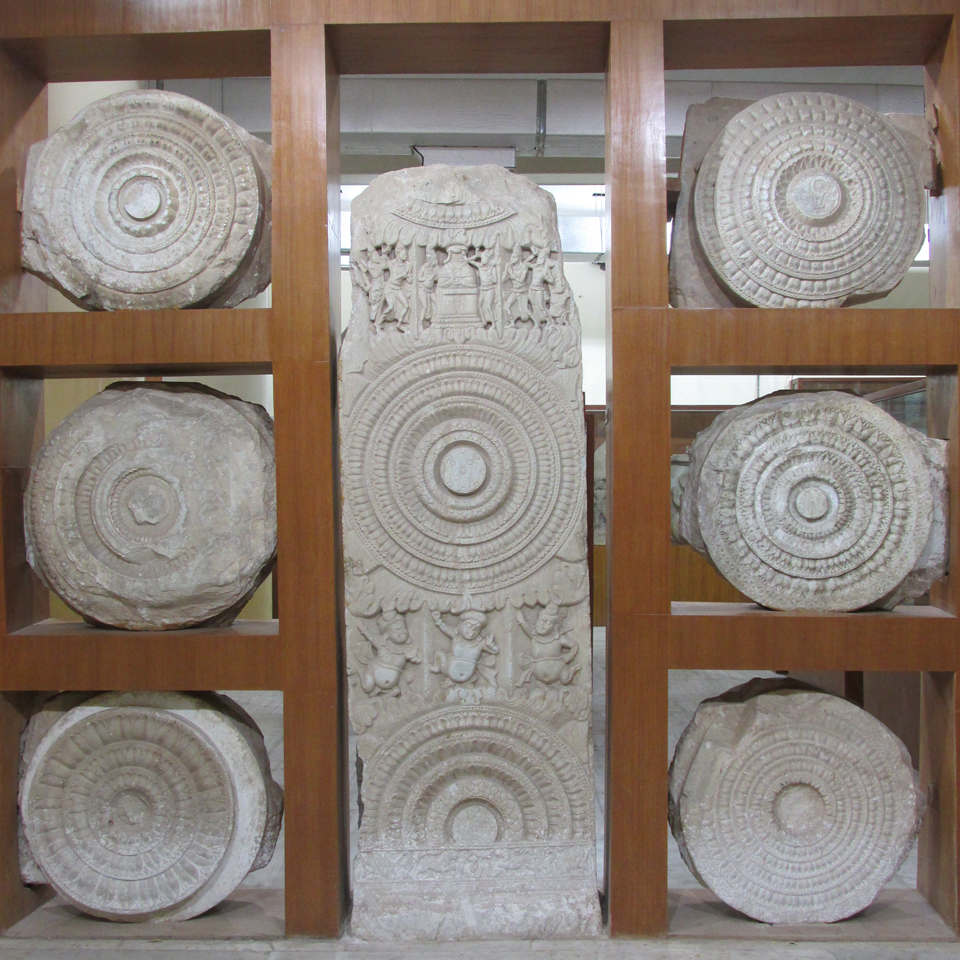Registered with the Registrar of Newspapers for India under R.N.I 53640/91
Vol. XXVIII No. 7, July 16-31, 2018
The Amaravati gallery
Dr. Chithra Madhavan
Our Museum’s wealth

Model of the Amaravati Stupa.
The Amaravati Gallery of the Government Museum, Chennai, has pride of place in that institution’s exquisite collection of stone artifacts. Famous books on the relics of this site include The Buddhist Stupa of Amaravati and Jaggayyapeta, written in 1887 by James Burgess, an eminent archaeologist, and Amaravati Sculptures in the Chennai Government Museum, by C. Sivaramamurti, first published by the Museum in 1942 when that well-known art-historian was the Curator of the Archaeological Section. A Guide to the Refurbished Amaravati Gallery by Dr. T.S. Sridhar and R. Balasubramanian, published in 2011 and detailing numerous exhibits of this section of the Museum, is useful to the visitor.
The stone sculptures here are from Amaravati (ancient Dhanakataka), near Guntur in Andhra Pradesh, best-known to historians and archaeologists as an ancient Buddhist site where there once was a large stupa. In the ‘Historical Introduction’ to his book, Sivaramamurti mentions that Colonel Colin Mackenzie of the Survey of India discovered the remains of an old Buddhist stupa in Amaravati in 1797 in a mound known as Dipaldinne, or ‘hillock of lamps’. The Zamindar of Chintapalle, who had relocated his capital to Amaravati, had ordered this mound to be dug up as he had been informed that there was treasure hidden inside it. Of course, no treasure was found, but unfortunately the marble pieces of this stupa, with exceptionally beautiful carvings, were carried away to various other structures and used there.

Exhibits at the Amaravati Gallery.
Realising the importance of the discovery of the site at Amaravati, Colonel Mackenzie went back to the place in 1816 and, subsequently, many slabs were taken to Masulipatnam from where a few were taken to the Bengal Asiatic Society’s Museum in Calcutta. Others were taken to Madras and then to the India Office in England. Sadly, many pieces were destroyed when they were used to construct other structures or were burnt by the locals. In 1830, a few of the carved slabs were taken to Masulipatnam by Robertson, the then Collector of that town, to beautify a marketplace named after him. Sir Frederick Adam, Governor of Madras, saw the slabs in this place in 1835 and had them brought to Madras. They remained in the Madras till 1859 and were later sent to Her Majesty’s Secretary of State for India and kept in the India Museum in England. In subsequent excavations too, like the one conducted by Walter Elliot, the Commissioner at Guntur in 1845, the sculptures discovered were sent to the Madras Museum and later sent to England.
Some of the beautiful pieces brought from Amaravati and painstakingly described in great detail by Sivaramamurti and included again in A Guide to the Refurbished Amaravati Gallery are sculptures of lions, one somewhat damaged, dating to 150 A.D. and once placed at the gateways to the huge stupa. The casing slabs of the stupa with various motifs are eye-catching exhibits. One such casing slab, which has been well preserved over the centuries, is of a stupa carved with a railing around it and three gateways, while another depicts a pot, or purnaghata, an auspicious motif. Various details, including the lions which guard the gateways, and pillars with the Buddha Dharmachakra symbol atop them and also celestials playing various musical instruments are depicted well. Even very small fragments datable to 200-250 A.D. have carvings which are recognisable after hundreds of years, despite weathering and damage. One such fragment shows Buddha with his disciples while another has the four main scenes, which had a lasting impact on young Siddhartha and made him leave his palace.
Various episodes from the Jataka Tales are intricately incised inside circular frames, which once adorned the stupa. One is the famous story of Buddha taming the ferocious elephant named Nalagiri, which his jealous cousin Devadatta had sent to kill him. This panel shows the wild elephant trampling on people, its anger clearly depicted even in this minute carving and depicted subsequently as kneeling before Buddha, completely surrendering to him. The fear writ large on the faces of the people around the elephant and the look of astonishment of those on the balcony on top clearly show the dexterity of the sculptor who carved this medallion. Other Jataka stories depicted as part of the casing slabs are those of Vidura Pandita Jataka, Kavi Kumara Jataka, Soumanasa Jataka and Chaddanta Jataka besides others.
One of the crossbars recovered from the stupa site at Amaravati shows an interesting scene of ‘stupa-worship’, where the stupa has two umbrellas on top, a few drummers and flautists and men and women in the act of worship. A famous broken sculpture from Amaravati is that of four women worshipping the feet of Buddha.
A careful study of the Amaravati Stupa’s relics by Sivaramamurti has brought to light many details in the carvings, such as snakes and also divine beings such as kinnaras (which have the legs of a bird and the body of a human), gandharvas (celestial musicians), dwarfish yakshas, Sri or the deity associated with prosperity, Vajrapani, an attendant of Buddha who holds a thunderbolt and many others.
Various animals are seen in the carvings, which showcase the Jataka Tales and include elephants, buffaloes, deer, lions, bulls and many birds. Different types of attire, such as turbans, crowns and also jewels and ornaments, like bangles, necklaces, bracelets and armlets, are clearly seen as also the different components of the army, including chariots, elephants, horses and many weapons. Architecture of those times, such as ramparts, gateways and palaces, are all there, to mention a few other treasures.
This gallery is truly a treasure-trove!

